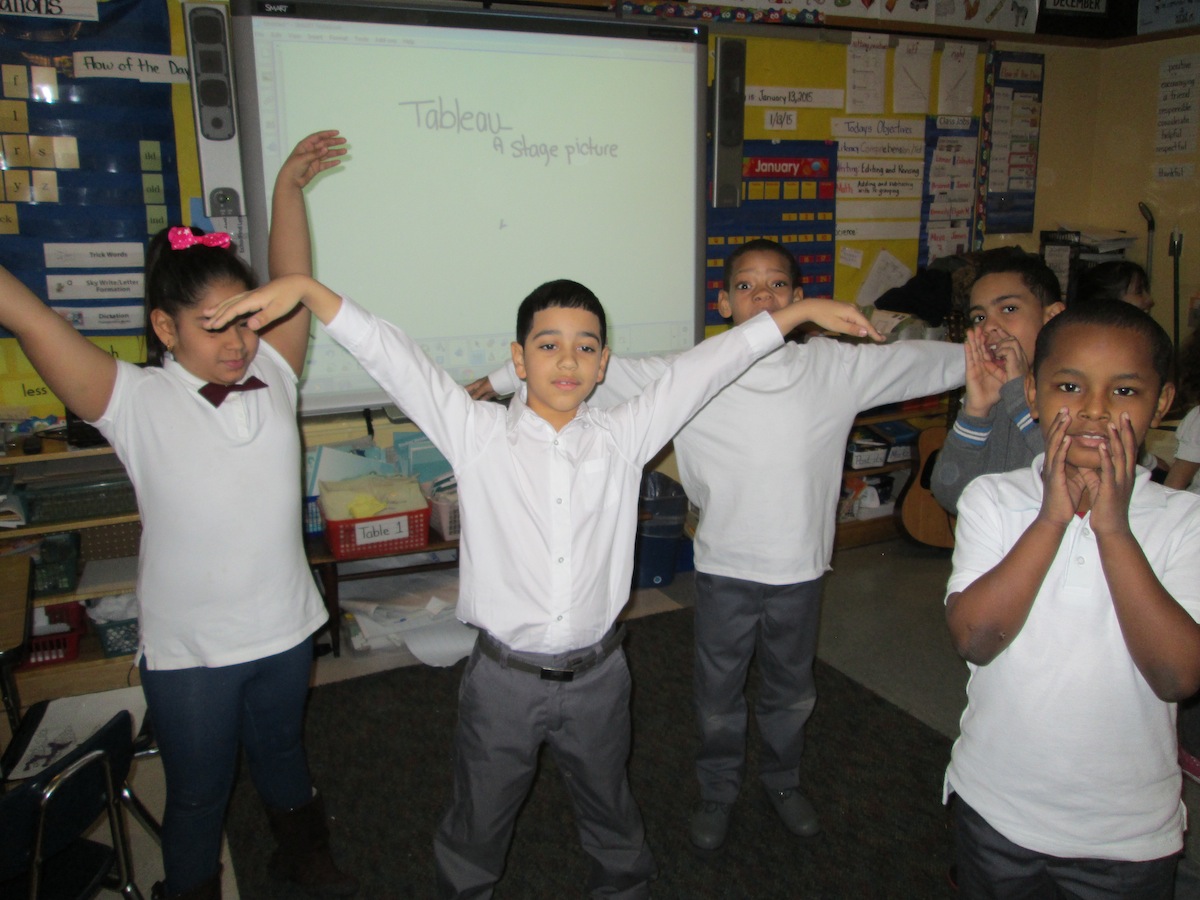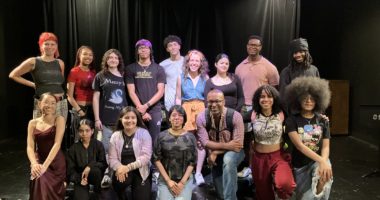On the second week of my in-school residency, my Community-Word Project Teaching Artist mentor, Mr. Scott, mentioned the class was a special needs inclusion class, meaning some special needs students (though not identified) were mixed in.
This residency is my first time working with special needs students, but the differences between this group and others of the same age are easy to spot. Mainly, they have very limited attention spans. When the Teaching Artists assign students tasks at their table groups, it can be difficult to hold them accountable. We have to circulate throughout the class and constantly check in on each group to make sure work is getting done. Even though short attention spans are characteristics of most first graders, the issue is heightened with this demographic.
Another caveat is the students’ emotional sensitivity. Often, I turn my head to find the child next to me, who had been smiling a minute earlier, in tears for some unknown reason. For example, the Teaching Artists created an indiscriminate selection process with popsicle sticks to pick a student to lead the opening focus exercise. They devised it to specifically address the fact that the kids feel left out so easily. Despite this thoughtful strategy, each week we still have kids profoundly upset when they don’t get picked.
However, Mr. Scott and Ms. Bianca do an incredible job of checking in with the kids and calming those that are distressed. One student is particularly prone to crying. Ms. Bianca always reaches out to her and encourages her to keep participating by inviting her be her “helper.” This consoles her and gets her to rejoin the class.

Since I have very little experience with special needs, I researched other strategies in order to effectively teach this demographic. I found a wonderfully clear handout on Childaction.org that explains the meaning of an inclusion class, its alignment with the Americans with Disabilities Act (ADA) enacted in 1990, and teaching suggestions based on each specific kind of disability (i.e. visual impairment, learning disability, physical disability).
Some of its suggestions for teaching students with developmental delays are particularly relevant for this class, such as:
- Teach in small steps
- Give clear directions
- Stand or sit close to the child to help as needed
- When moving from one activity to the next let the child know ahead of time and allow plenty of time for the transition
These recommendations are no doubt helpful for all children, but they are even more impactful for this group. The kids need tasks assigned to them one at a time, otherwise they will lose track of what they need to accomplish. They need directions given to them clearly and reiterated at least once so that they remember what to do. Ms. Bianca is wonderful about speaking clearly and concisely as well as repeating directions. She also frequently asks students to raise their hands to repeat the directions for the whole class. Both TAs also move throughout the classroom to check in on the students. I have noticed that when I walk over to a student and stand close to them, it often gets them back on task without me having to say a thing.
I also came across some interesting research related to the benefits of using music related activities with special needs groups. An article published by psychologist Susan Sze and educator Sanna Yu explains that because “music focuses on accuracy and attention” it is particularly beneficial for kids with attention deficit disorders and learning disabilities. They specifically note that striking an instrument uses visual, auditory, and kinesthetic skills.
This may explain why the class opening ritual is so effective. The activity involves someone ringing a Tibetan singing bowl and, in response, the students point their hands toward the bowl and direct all their energy toward it. This notoriously unfocused group is incredibly good at this exercise. No matter how scattered they become throughout the rest of class, the moment the bowl is rung, they are back on task. It is such a simple and effective tool that I will definitely use in my classes.
Perhaps the main take-away from working with this group is that patience and clarity go a long way. However, that is not exclusive to special needs students; those qualities are incredibly valuable—in fact essential—when working with kids of any age and skill level.
-Ally Tufenkjian, Theatre Artist, TATIP Trainee



